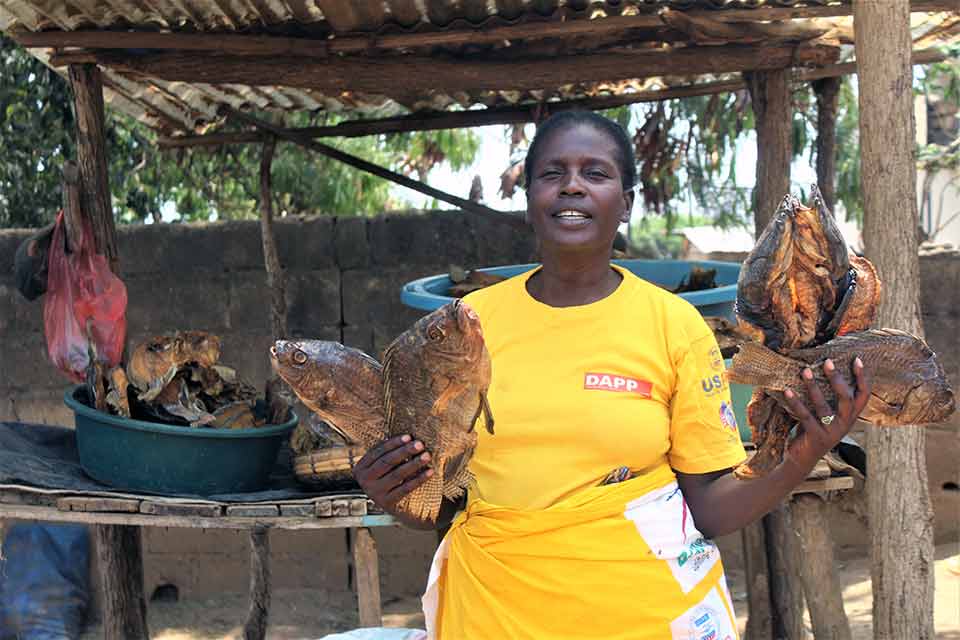"Changing lives of vulnerable children and building livelihood resilience in their families"
The ZAMFAM South Central Project worked towards the improvement, care, and resilience of vulnerable populations while supporting HIV epidemic control in Zambia. Since its inception, the project accelerated children’s HIV/AIDS treatment initiatives, aimed at reducing new HIV infections in young women and men, and increased the number of children receiving treatment. It strengthened families and community structures such as Community Action Groups, Community Welfare Assistance Committees (CWACs), and Support Groups to improve the care of Orphans and Vulnerable Children (OVCs). The project also strengthened linkages between families, community structures, and government services.

In 2019 the Project clocked 4 years of implementing its activities in 14 districts of Central and Southern Province of Zambia, with the main objective of supporting vulnerable children and adolescents infected with, affected by or vulnerable to HIV/AIDS and their families. The Activities focused on:
- increasing the resilience of households to care for their children
- improving the health and wellbeing of the 128,124 children enrolled in the project
- building the capacity of government and community structures to care for and support vulnerable children
- reduction of HIV infection among children and youths in the operation areas
A total of 363 project staff implemented the project with funding from USAID/ PEPFAR in cooperation with the Ministry of Community Development and Social Services, Ministry of Education and Ministry of Agriculture.
Each field staff was responsible for 500 Orphans and Vulnerable Children (OVC) and their families and they developed and updated case management plans with the aim of graduating the children and families at the end of the project.
They worked with the community structures in place, including the Community Action Groups, the Community Welfare Assistant Committees (CWACs) and In and Out of School Youth Clubs. They also worked with community volunteers such as the Child Care Volunteers (CCVs) and Community Health Workers (CHWs).
Families improved their resilience and strengthened their economy through the training and activities in 2,939 Action Groups, which included Internal Saving and Lending, Pass on Gift system of livestock and legumes, entrepreneurship and business training and linking to markets.
HIV prevention activities were carried out through In and Out of School Youth Clubs as well as condom distribution for sexually active adolescents and youths.
HIV adherence support was provided to 11,138 HIV positive children and youths, while a total of 17,255 children were supported with school fees through school block grants and 502 adolescents received vocational training.
Project Elements
Community Action Groups for Mutual Support
2,939 Community Action and Saving Groups were the foundation for results achieved in the ZAMFAM project in 2019. These groups consist of one representative from each of the benefiting families. The groups provided a platform for peer support, information and sharing of best practices, discussing and challenging each other to adopt healthy, sound and productive practices and members supported one another with internal saving and lending activities. The group members also met weekly for lessons and actions. Project staff met monthly with the group coordinators for review and planning.
Pass On Gifts for Economic Strengthening
29,788 families received pass-on-gifts through the ZAMFAM Project in 2019. The gifts consisted of goats, chickens and crop input mainly for legumes in rural communities including cash for income generating activities in urban communities. The pass-on gifts were accompanied with training and mentoring facilitated by project staff as well as government extension workers from the Ministry of Agriculture and Ministry of Community Development and Social Services. The families paid the gifts forward to other families in the Action Group through the Pass-on Loan Committees.
Adherence Support for HIV Positive Children and Adolescents
11,138 HIV positive children and adolescents were supported by ZAMFAM in 2019. They improved their viral load through monthly visits from assigned Community Health Workers, who provided treatment literacy and established and trained “Trios” - which is a buddy system consisting of the child/adolescent and two supporters (often the guardian and a neighbour). Project staff in cooperation with health facilities and NZP+ supported 209 Teen Clubs for HIV positive children and adolescents.
Children and Adolescents Knowing their HIV Status
The project carried out a comprehensive risk assessment to identify children, adolescents and youths who had been at risk of HIV since the last HIV screening and testing action. All the enrolled children and youths were assessed and those who had been at risk were tested.
Behaviour change activities were carried out through 426 In School and 289 Out of School Youth Clubs, training of Youth Champions to reach out to their peers and through establishment of condom outlets for easy access for adolescents and youths in need. 1,520,414 condoms were distributed using 328 condom outlets